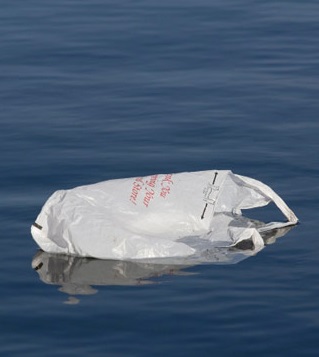Plastic paths detailed
 Researchers have made some surprising findings about the degradation of microplastics in the ocean.
Researchers have made some surprising findings about the degradation of microplastics in the ocean.
Australian Nuclear Science and Technology Organisation (ANSTO) research has found that the structural degradation of plastic in the ocean facilitates its entry into the natural carbon cycle efficiently as carbon dioxide.
Experts made the finding while studying the fragmentation of packaging into microplastics in the ocean.
The work does not diminish the serious threat to wildlife from large pieces of packaging but draws important conclusions to the factors determining the lifetime of plastics in the environment.
It provides important understanding of the molecular-scale physical mechanisms which enable the fragmentation of plastics into the ocean.
“Cellulose waste, including cardboard and paper, enters the carbon cycle by a well understood process. In recent years plastics, and in particular polyethylene, which originate from fossil fuels, have replaced paper as a barrier material for packaging. It is important to understand how this carbon, from a fossil pool, enters the carbon cycle,” says Dr Chris Garvey, Instrument Scientist at ANSTO’s Australian Centre for Neutron Scattering.
With exposure to UV sunlight and oxygen in the ocean plastic begins to get brittle, crack and break into smaller pieces.
Dr Garvey and his associates wanted to know the molecular scale process leading to embrittlement and if these processes slow or hasten the chemical degradation of plastics.
The microplastics used in the experiments included samples that were collected in the tropical waters of the Caribbean as part of the Atlantic gyre.
These samples were compared slightly larger weathered pieces of plastic from the same source and new samples that were the matching source of the weathered pieces.
The microplastics, which were about a millimetre in size, had been in the water a long time but there is no way of knowing when they entered the ocean other than they represent significant fragmentation of the original packaging.
However, probes with analytical techniques, most specially small and wide X-ray and Raman scattering, identified important changes to the microstructure.
Plastics, in this example, polyethylene, consist of extremely long molecules which span many layers of alternating layers of crystalline polymer chains forming a lamella structure.
This is the normal structure of polyethylene produced by injection moulding which is used for packaging.
The natural tendency of the long chain molecules is to crystallise and this process is frustrated by the entanglement of the polymer chains between the crystalline lamellae.
UV radiation in sunlight causes the chains to be cut.
This has implications for the major degradation pathway which ultimately converts the polymer chains into carbon dioxide.
“This releases the kinetic arrest, so the polymer starts to crystallise slowly again and this crystallisation process disrupts the lamella structure,” explained Dr Garvey.
“When the lamella is disrupted, it is no longer such an effective barrier and oxygen can diffuse more easily into it,” he said.








 Print
Print